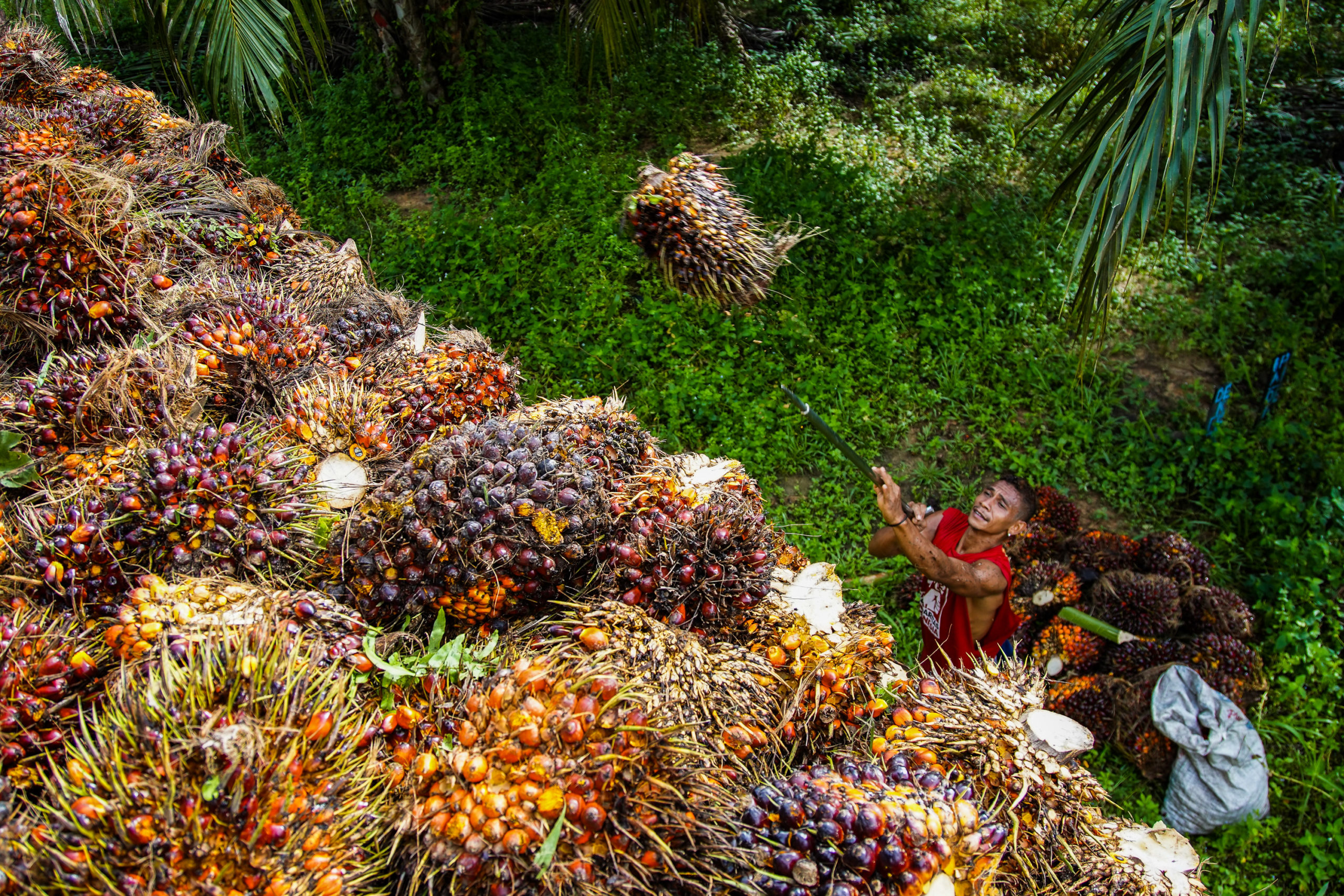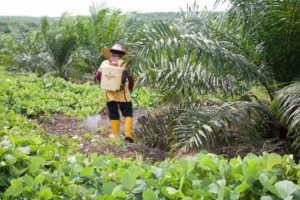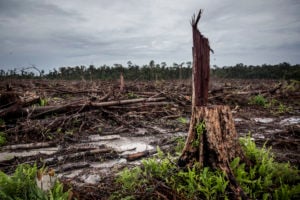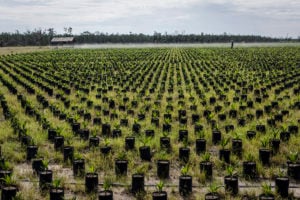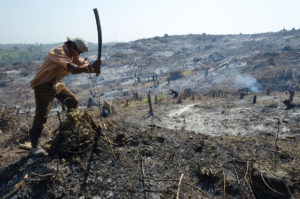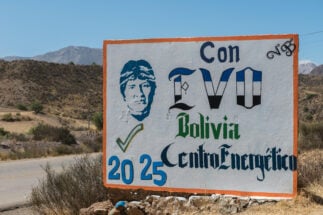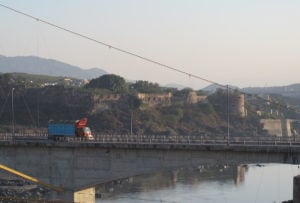Global palm oil prices have soared in recent months, with other vegetable oils including sunflower and soy on similar trajectories, driving the UN Food and Agriculture Organization’s vegetable oil price index to a record high in February – a peak that has continued to rise.
A perfect storm of issues had already contributed to this skyward surge. The Covid-19 pandemic has brought various difficulties in logistics, and government mandates on using palm oil in alternative fuel blends have meant more demand. There have also been supply shortfalls, aggravated by droughts in Latin America, and labour shortages and floods in Malaysia.
Further price spikes have now been set off by the shock of Russia’s invasion of Ukraine, and the subsequent rollout of sanctions on Moscow and its allies. Rising petroleum prices have impacted shipping costs and boosted the viability of using palm oil as an alternative fuel, and as a replacement for vegetable oils from Russia and Ukraine. US Department of Agriculture data shows that Russia and Ukraine together account for about 2%, 8% and 57% of global soybean, rapeseed and sunflower seed production respectively, and are significant presences in global exports of soybean oil (7%), rapeseed oil (20%) and sunflower oil (77%).
The halt to shipping at Black Sea ports and sanctions on the SWIFT payment system are major concerns, which will only intensify if the war is protracted. The surprise moves earlier last month by Indonesia, the world’s number one vegetable oil producer, to restrict exports – and a few days ago to ban them altogether – as it struggles to counter domestic cooking oil shortages, have also contributed to making palm oil more costly.
This blend of circumstances has triggered a remarkable rise on pre-pandemic prices. The palm oil futures price, traded on the Bursa Malaysia Derivatives, has risen from monthly levels of around US$475 per tonne between June 2018 and September 2019, all the way up to US$1,627 on the eve of the war. It has since spiked to a new high of about US$1,942 on 1 March, before easing to below US$1,642 in mid-March. In comparison, the previous peak was US$1,280, in 2011.
As the market weathers soaring prices and supply pinches, how both industrial and smaller growers, and national regulators, respond will be of great importance to the continued progress of efforts to support sustainable palm oil production, and to curtail palm-linked deforestation.
Declining deforestation in Southeast Asian plantations
The vast majority of palm oil is derived from the African oil palm, which has a 25-year life cycle. Malaysia and Indonesia account for about 23% and 59% of global palm oil production respectively, according to USDA. The recent trend has been rising supply constraints. Over the past five years, USDA data shows, Malaysia has produced an average of 19.3 million tonnes a year, but 2021/22 saw a 3% drop on this average – a result of acute labour shortages and the limited land left for expanding production in the country.
As for Indonesia, production is still on an upwards curve, despite slowing growth of land area used for cultivation, driven by policy moratoria on peatland development, deforestation and new concessions – freezes that have chafed with business aspirations. Meanwhile, the country’s hectarage with mature oil palms (aged 9 to 18 years for peak crop yields) is rising, with 2021/22 production hitting 44.5 million tonnes of palm oil, a 2.3% increase on the previous year.
Dominated by large plantations in Indonesia and Malaysia – including a few giant plantation groups that control hundreds of thousands of hectares each – the sector has in recent decades acceded to voluntary sustainability schemes, notably the Roundtable on Sustainable on Palm Oil (RSPO), which was initiated in 2004. This certification has greatly helped to reduce both upstream greenfield expansion by its members and limited them from acquiring plantations from non-members, who practised looser environmental standards to land development. In a landscape where three or four companies control three-quarters of global volume, efforts towards sustainability have been strengthened by moves by palm trader-processors to adopt pledges on “No deforestation, no peat, no exploitation” (NDPE). These have also been accompanied by numerous traceability efforts, including trace-to-mill or even stricter trace-to-plantation and trace-to-farm initiatives.
These endeavours have slowed the expansion of the area of industrial plantations, as illustrated by data from TheTreeMap, a forest-loss tracking initiative (see chart below). According to Chain Reaction Research, a sustainability risk analysis group, in 2021 a total of 19,000 hectares of forest land was cleared for industrial oil palm plantation development in Malaysia, Indonesia and Papua New Guinea – the world’s eighth largest producer country – far lower than the 90,000 hectares and 38,000 hectares recorded in 2019 and 2020 respectively.
But while these declining rates of forest conversion by industrial palm oil operations now offer some comfort in sourcing from bigger plantations, some buyers and NGOs remain worried about deforestation that may enter supply chains by way of unfettered expansion of smaller estates and smallholder growers.
Small growers expanding fast under the radar
Industry observers have noted that, when prices spike, this is usually followed by an enthusiastic purchase of oil palm seeds. Findings from the consulting firm LMC International show a doubling of seed sales in 2021 on 2018 levels, but the area being planted in recent years for oil palm is substantially below historical averages. “With larger plantation companies unable to expand, the vast majority of this planting [of newly purchased seeds] will be by smallholders and smaller, less visible estates,” they said.
Looking ahead, the worries over deforestation-risk expansion now remain focused on smallholder production in Indonesia and Malaysia, which represents around 40% of plantation area. Smallholders face fewer restrictions in their expansion, and policymakers and politicians favour their interests. There have been good indications that they are even encouraged to expand – especially during election years by provincial politicians seeking votes and bribes. Studies report deliberate forest clearance and fires used to clear land and increase land transactions during these periods. Weather can also influence land use change: when the dry-climate drivers of El Niño and Indian Ocean Dipole (sometimes known as the Indian Niño) coincide with election cycles, notably in 2015, the deforestation-by-fire risk seems to be greatly enhanced.
High base prices have recently made sourcing palm oils more costly than competitor oils, such as soybean and coconut oils, whose expansion are now – belatedly – also facing big sustainability questions. This is a significant turnaround for what was for a long time the cheapest vegetable oil. But the resultant tight supply outlook, plus extra demand driven by billions of dollars pumped in to support biofuels by both Indonesia and the EU, has helped to create a big price signal for small estates and smallholders. Where will the extra oil palm seeds enthusiastically purchased be planted? Can policymakers and politicians steer keen farmers away from forested areas?
Channelling sustainability premiums to small growers
As the Singapore Institute of International Affairs (SIIA) reports, the trigger of high palm oil prices increasing deforestation has become less significant in recent years. But could this revert? What has gone under the radar is the rise in the premium paid for producing certified sustainable palm oil products. These can now range from US$10 per tonne for basic palm oil feedstock, to US$1,000 per tonne for refined fractions of specialty palm kernel oil paid to trader-refiners.
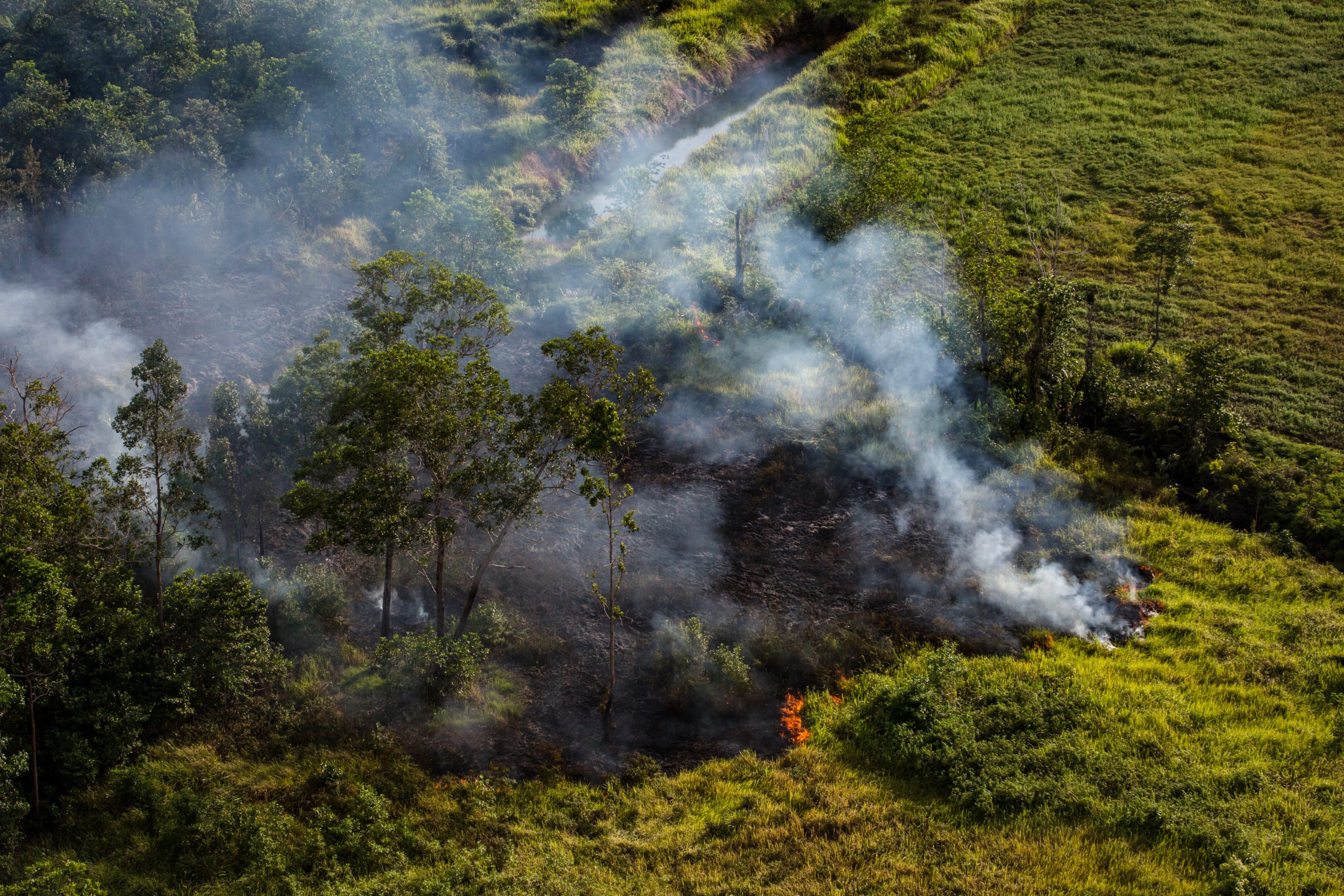
High premiums and supply shocks should be no surprise with the sizeable but still relatively limited availability of RSPO-certified sustainable palm oil, that accounts for about 20% of global supply. But efforts to sustain and increase RSPO share have been hampered, as some members face scrutiny for various actions, including allegations of destructive practices and forced labour. Furthermore, RSPO suppliers are often co-certified with International Sustainability and Carbon Certification (ISCC), the dominant certification for the EU biofuels mandate market, making their actual supply to the RSPO lower.
However, small estates and farmers may be swayed by a rhetoric that suggests Western markets now make too many environmental, social and governance demands, and that other markets such as China, India and Africa may be motivated by price only – and are therefore more reliable. They are also captured in a pervasive public discourse that says “sustainability doesn’t pay”, or that there may be a vast surplus of certified products. But, in fact, combining the production with RSPO and ISCC certifications, their supply and demand is not too far out of balance, as was already the case a few years ago. And if the big rise in RSPO premiums suggests anything, it’s that the supply is actually quite tight.
Nevertheless, for most certified palm oil materials there is a surprising lack of price discovery, and transparency around its process – for products certified with RSPO (the dominant certification for non-energy use markets) and those with ISCC. Rather, sustainability premiums are usually determined in over-the-counter transactions between big sellers and their clients, and the information they use is kept away from the public. The big sellers dominate the sustainable market and new suppliers have a hard time understanding what is going on. As a consequence, smaller producers don’t see the financial incentive to shift to sustainable production. But in order to make an impact and drive financing upstream in the palm oil supply chain, more questions must be asked about how to make the premiums-discovery process public, and on how to share these premiums more equitably with small estates and farmers. If the RSPO, ISCC and others do not put it on their agenda, it is uncertain how this situation can change.
However, knowledge of these high premiums is starting to get through, presumably as a result of some independent mills in Southeast Asia joining the RSPO, and the outsized increase in Latin American and West African suppliers gaining certification in the last three years. Unlike traditional hotspots such as Indonesia or Malaysia, many newer origins for palm oil have started off with non-deforestation policies from the outset, seeking differentiation. Moreover, they have short and simple supply chains that offer easy traceability and are easier to certify, as their palm oil mills have straightforward links to a captive smallholder base. In contrast, Indonesia and Malaysia have to overcome systemic issues, including a history of forest conversion and a business landscape dominated by a complicated network of dealers that discourage traceability and certification.
If big buyers were to purchase certified smallholder products, could the difficult-to-certify and doubting smaller suppliers of Southeast Asia be left behind in value-added markets, overtaken by their counterparts in other regions of the tropical belt? Here we see the delicate challenge facing the region. In a landscape of spiking prices and changing climates, efforts to bring smallholders further into the fold on sustainability will require careful policies and action, balancing concerns of environment, production and livelihoods. Given their significant contribution to regional and global output, it is a challenge that can’t be ignored.
This article is part of our ongoing series on palm oil. Explore the series to date here.
